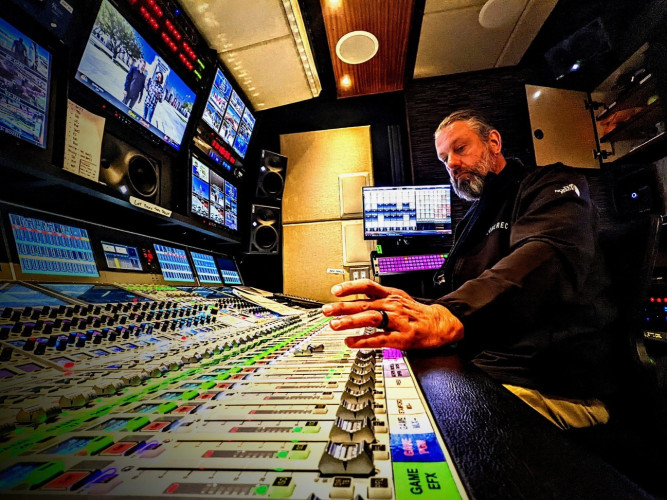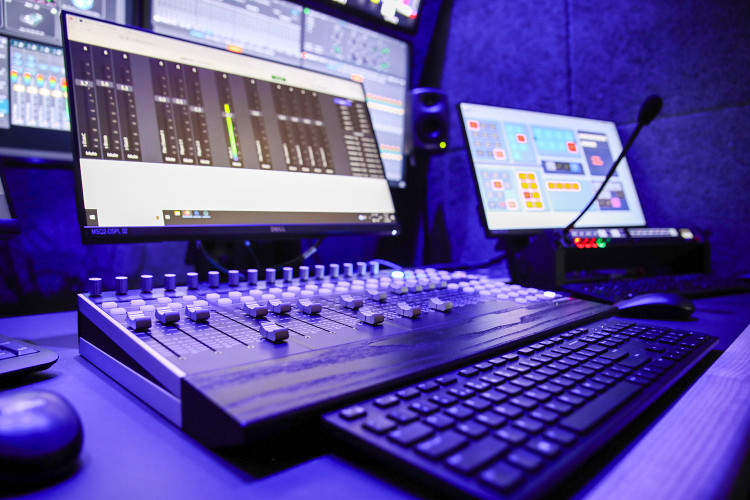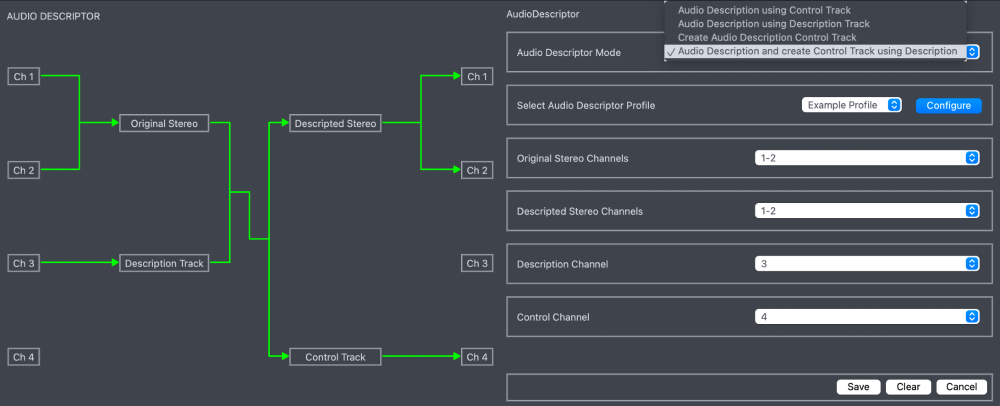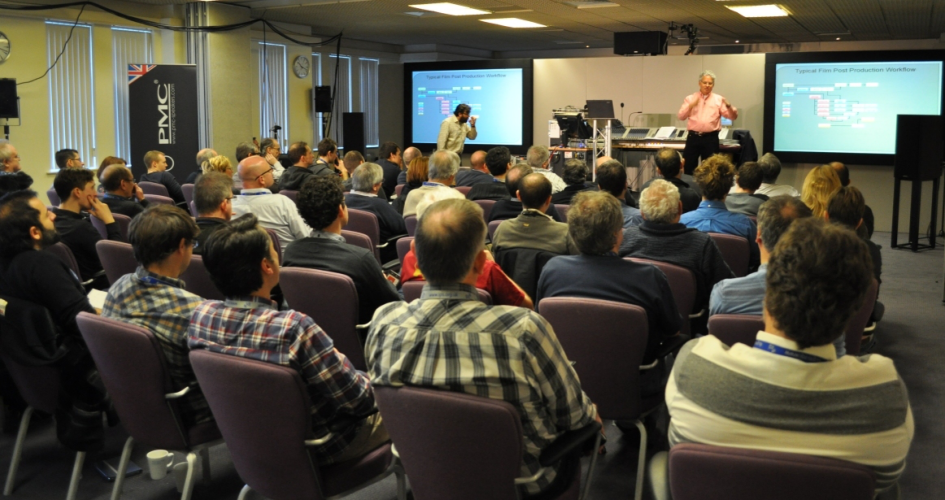The move to digital systems in broadcast audio means that engineers and systems integrators have had to evolve new means of testing equipment. Simon Woollard, Applications Engineer for audio test and measurement manufacturer Prism Sound, discusses some of the issues faced by today’s broadcast engineers.
The Aims
In terms of audio performance, the broadcaster’s aim is to deliver high quality, intelligible audio, free from undesirable noise and distortion, and a robust service free from intermittent faults. There are, broadly-speaking, three areas of concern here:
1) Characterising components and systems within the pre-transmission path
2) Verifying the complete signal path from source to customer
3) Long-term reliability issues – preventing audible ‘pops’ and ‘glitches’
Each of these areas brings unique challenges, and we will deal with them in turn, paying attention to the implications for audio test instrumentation.
1) Performance of Audio Components and Systems
The aim here is to ensure that equipment installed in the broadcast signal path is fit for purpose and functioning correctly. The introduction of digital audio storage and transmission has brought with it new challenges, and checking signals with headphones is no longer sufficient!
The Audio Engineering Society (AES) developed and published the AES17 recommendations specifically for testing digital audio equipment. Despite broad awareness of the AES/EBU interface, better known as AES3-2003, AES17 appears to be generally not well known. A personal copy can be obtained from www.aes.org, and a useful one-sheet summary is available at www.prismsound.com/AES17.
More on AES17
AES17 aims to provide a consistent methodology for manufacturers and system builders. The AES17 recommendations cover A-A, A-D, D-D and D-A testing, and there are several common considerations across these various modes:
Input characteristics
Output characteristics
Linear response
Amplitude linearity
Signal-to-noise ratio
Crosstalk
The challenge for broadcasters here is time; large systems with many components, modes of operation and channels can be time consuming to test. It is not always necessary, however, to perform all of these tests. It is reasonable to select a relevant and useful sub-set to prove basic performance, for example, and to state 'measured in accordance with AES17'.
Test Equipment
Broadcasters may have their own performance criteria for audio equipment, or devices may be checked against manufacturer’s specifications before being commissioned. Either way, an audio test system is needed for analysis. An internet search for "digital audio analyzer\" will produce a good selection, including systems with analogue functionality.
Digital-only tests are also available, and there are several portable analyzers on the market. "AES3 interface analyzer\" is a good search string for browsing the available options. Particularly important in any equipment is the need to test the performance of the AES3 interface itself. The key requirement is the ability to measure not just jitter, but the ability to separate Fs-jitter (source-related) from data-jitter (cable-related) components – vital to determine whether a measured problem is due to a source, cabling, or both.
Automation is a key requirement if large-scale testing is to be efficiently deployed. Prism Sound provides automated tools which can run individual AES17 tests or comprehensive test routines from no more than a mouse click, greatly simplifying the task of testing.
2) Performance Experienced by the Customer
Audio quality needs to be monitored from the perspective of customer experience, but in addition, minimum performance limits also often form part of contractual obligations for service providers, re-enforcing the need to evaluate live broadcast quality.
Measuring Live Broadcast Performance
In order to reliably measure performance metrics such as noise, distortion, crosstalk and amplitude response, test tones are needed. But test tones are objectionable to listen to, so their use in live broadcast is typically restricted to as little as a second or two during the night – and this does not give sufficient time for traditional test techniques.
Multi-tone Testing
Multi-tone signals consist of many sinusoidal tones playing simultaneously, a technique simply not practical with discrete analogue oscillators. By careful design of the tone components in software or DSP, and using digital frequency domain analysis, we can analyze not only the tones themselves, yielding frequency response information, but we can also analyze the ‘gaps’ between tones, yielding noise, distortion and crosstalk responses from the same measurement.
A traditional sinusoidal frequency response sweep could take tens of seconds to complete. Contrast this with a multi-tone measurement which can yield frequency response in addition to noise, distortion, crosstalk and more, and which can execute in a fraction of a second! This technique is ideally suited to live broadcast analysis where test times are critical.
An article entitled “Testing Live Broadcasts” on www.prismsound.com elaborates on the theory behind multi-tone testing, and a “Transmission Monitoring Script” employing multi-tones is available to download.
Analysis Automation
In order to cover the territory of a broadcast network and to ensure reliable and repeatable results, there is a need to automate receiver-end testing. A live broadcast test system therefore ideally needs to automatically:
Detect the onset of test tones to trigger testing
Perform analysis once the tones are detected
Determine whether the analysis results are acceptable
Transmit a test report to a human operator
This sounds complex, but the age of the digital audio analyzer makes this all possible. Prism Sound has delivered ready-made broadcast test solutions that achieve this degree of specialization, right down to sending automated email reports to engineering staff. Only in recent times, with the advent of the digital audio analyzer, has this level of sophistication been available “off the shelf”.
3) Long Term Reliability
Shortcomings of Audio Tests
There are limitations to the tests we have discussed so far: Results are valid at a single moment in time, but this does not guarantee trouble-free performance over the longer term. Reliability tests should be included as part of the signal chain commissioning process to ensure robust service, and care should be taken in specifying test equipment that includes this functionality.
Signal Path Tests
An important consideration for digital audio systems is the need to characterise the carrier signal separately from the audio data. Unlike analogue, the quality of digital audio does not degrade gracefully or progressively. As the carrier degrades, audio transmission will suddenly fail, leading to audible pops and glitches. A system close to failure may be forced over the edge by something as simple as flicking a light switch. So not only are we looking for reliability in terms of audio performance, but also in terms of maintaining a margin of safety to allow for unpredictable events.
The analysis functionality required for reliability testing includes:
- Audio data integrity
- Digital carrier Amplitude
- Jitter (Fs and data jitter)
- Jitter spectrum
- Bit activity
- Digital frame rate & frame rate accuracy
- Channel status implementation
- Receiver susceptibility to degraded carriers
- Limit checking / event log
The simplest way to test the integrity of a transparent digital signal path is to send a known data pattern and to check whether it is received without bit errors. On Prism Sound analyzers, this test is called “Channel Check”. The receiving analyzer can keep a log file of failures over arbitrary time periods to verify the long-term reliability of the channel. The result should be zero errors.
For a non-transparent path, such as those including lossy codecs, A/D or D/A converters, different techniques must be used to detect intermittent faults. Here at Prism Sound we recommend transmitting high-quality sine waves and measuring distortion using a tight maximum reading limit. Breaches of this limit are automatically logged against time, and again, the required result is zero errors.
Digital source equipment can be monitored for digital carrier quality, with results again logged along with any breaches of limits. AES3 receivers can be tested by deliberately degrading the test system’s digital output carrier: By adjusting jitter, carrier amplitude, rise-time and interference we can test a receiver’s resilience to poor carrier signals. Prism Sound’s digital test instruments can even be left in-circuit in “loop-through” mode to assist in debugging troublesome systems ‘live’.
Conclusions
In today's digital broadcasting world, there is more equipment to test, and many more ways of testing it. Fortunately, the agile-minded engineer can develop ways to limit what needs to be done to the essentials, and expedite these procedures with highly integrated automated equipment. New techniques like multi-tone testing can vastly reduce testing time and new test problems arising from the adoption of new technology can be addressed with specialist equipment.




































